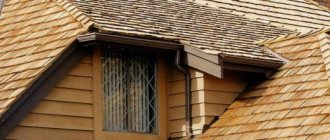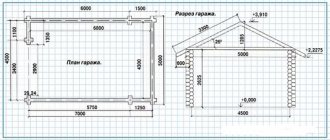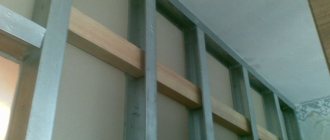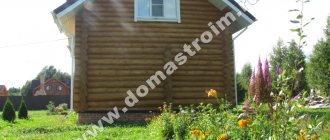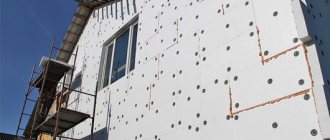The quality of the soil has a great influence on the choice of foundation and the entire construction technology in general.
In Russia there are a large number of problem regions where swampy, flooded or weak-bearing soil types predominate.
The use of a traditional foundation in such conditions is unacceptable, but pile types of support structures come to the rescue.
They ensure contact of the base with dense layers of soil and allow the construction of massive and heavy buildings without fear for their condition.
There are also lighter options for pile foundations, which include screw piles.
Foundation on screw piles
Screw piles are a supporting structure in the form of a system of metal pipes immersed in the ground with spiral blades welded at the bottom (photo below) . They play the role of cutting, similar to that done on screws.
The pointed conical tip allows the trunk to enter the ground more easily, and the blades perform the cutting function and in parallel serve as support units.
The submerged support is kept stationary due to the frictional force between the side walls of the pipe and the ground, as well as due to the load on the blades. The installation is carried out according to a certain scheme, forming the so-called. a pile field that ensures uniform load distribution across all shafts .
After immersion, the upper parts are trimmed to form a flat plane and tied with a load-bearing belt - a grillage.
It provides a supporting structure for the walls and evenly transfers the load to the pile system.
The functions of the grillage are close to the operation of a strip foundation, but the support for it is not the ground surface, but the upper ends of the vertical rods. To strengthen the structure, hollow pipes are filled with compacted concrete after installation, which makes them immune to possible lateral loads .
IMPORTANT!
Installation of screw piles does not require immersion until contact with dense layers of soil occurs. With sufficient depth, they quite reliably hold the building, being a hanging type of piles.
Piles for a foundation structure - what are they?
The foundation itself is the support for the house. But it must stand on a solid ground support, otherwise, under the influence of loads from the building, it will begin to move in different directions, which will lead to the destruction of the building. Weak soils cannot provide support for the foundation, which is why piles are installed under the foundation structure, which with their lower ends rest against a strong soil layer located deep underground.
There are several technologies for installing pile structures, where three main types can be distinguished:
- Hammering technology. This is when a reinforced concrete pile is simply driven into the ground using a special installation.
- Drilling technology. This is when a well is made in the ground, a pipe is inserted into it, used as formwork, and a concrete solution with reinforcement is poured into it. After the concrete has dried, the pipe is pulled out or left for reinforcement.
- Screw technology. For this purpose, metal piles made of steel pipe are used, the design of which includes a drill. They are simply screwed into the ground to the required depth.
Advantages and disadvantages
The advantages of screw piles include:
- High installation speed.
- Possibility of manual installation, which allows you to work in close proximity to finished buildings.
- The cost of screw piles is much lower than other types of foundation.
- Possibility of reuse. If necessary, the piles can be removed and used elsewhere.
- No excavation required for installation.
- It is possible to build on slopes or folds of the terrain.
- You can do without the use of complex equipment.
The disadvantages are:
- Operating conditions promote corrosion.
- The use of screw piles in regions with high seismic activity is prohibited.
- Immersion in rocky soil is not permitted.
- The use of screw piles on loose or weak-bearing soils that do not provide sufficient lateral support requires additional examination and clarification of the immersion depth.
Most of the shortcomings are often hushed up by manufacturers, so it is necessary to have a complete understanding of the properties and qualities of the design.
Recommendations when choosing a foundation
The feasibility of erecting a foundation on piles, the pros and cons of the resulting structure, depend on many factors.
Online foundation calculator
To find out the approximate cost of a “grillage on piles” foundation, use the following calculator:
Construction on screw piles
The pile-screw foundation is not suitable for buildings made of brick, concrete or reinforced concrete blocks. A stationary building will gradually collapse due to uneven shrinkage of the foundation in the ground. There is no need to count on its long life.
Pile-screw foundation for a terrace Source domstroy-remont.ru
This type of foundation is ideal for lightweight frame, frame-panel or wooden buildings with a certain mobility.
Having a house on a pile-screw foundation, you can make an extension without much expense. This is convenient when there was a mistake with the layout or initially there were not enough funds to construct a building of a larger area.
Soil requirements
For some types of soil, a pile-screw type of foundation is recommended. It is suitable for almost all types, except coarse rocky soil. Preferred in sandy, loamy or wetlands where it is impossible to install a strip foundation.
Removing a pile-screw foundation Source yastroyu.ru
See also: Catalog of companies that specialize in foundation repair and design.
Process speed
If you need to build a building in a short time, then a pile-strip foundation is the best choice. Firstly, the foundation itself is quickly and easily erected. Secondly, after its completion there is no need to wait for final approval and shrinkage, as with concrete technology, which will require stopping work for about a month. Immediately after organizing the foundation, you can begin building the walls.
Like any other foundation, screw piles have advantages and disadvantages that cannot be ignored when using such a foundation to build a residential building.
Benefits of technology
The technology is quite simple; all stages can be performed by several people with skills in such work. Experienced craftsmen need only a couple of days to build a foundation for a small building.
The process does not require serious excavation work, nor the use of:
- large vehicles for delivering materials;
- specialized installations for mixing concrete mixture.
As a rule, lumber is used for tying a pile structure, the installation of which is also not difficult.
Installation of piles under the foundation Source krutim-svai.ru
The technology for installing screw piles allows work to be carried out in the cold season. Special calculations are carried out to determine the depth of the pile drive in a particular area; it must be below the soil freezing level. Sufficient resistance of the soil to heaving in frosts at the calculated depth makes it possible to install screw piles in the ground at this time.
A few more advantages
Assessing the foundation on screw piles, its pros and cons, it should be said that the number of positive factors is much greater than the number of negative ones. Clear advantages explain the growing popularity of screw piles in private construction:
- Acceptability of organization on moving soils or complex relief surfaces. Can be installed on a site with a slope of up to 8 m.
- Saving time and money. The cost of materials and work for a pile-screw foundation is 5 times less compared to a strip foundation, and 3 times less than a tiled foundation (for buildings of the same area).
- The ability to get a dry and warm floor without additional work. A building built on stilts is located above ground level, which protects against moisture penetration and prevents the floor from rotting.
At the same time, the foundation on piles is not inferior to a concrete foundation in terms of service life. A structure built according to all rules will last at least 50 years.
Flaws
Despite the many advantages, there are several disadvantages that need to be considered:
- Difficulties in organizing the basement. It is clear that the design features do not require the presence of side walls, so installing a basement will require additional work and funds.
- Not suitable for mountainous areas. Stone soil will not allow the piles to penetrate to the required depth.
- Experienced specialists believe that such a foundation is suitable for strengthening only one-story frame buildings.
There may be more negative aspects if calculations and construction work are performed incorrectly, and if low-quality materials are used.
Types of supports
Let's consider what types of screw supports are used in modern construction:
By area of application
This type of foundation is used much more widely than it might seem at first glance.
Screw piles are successfully used in the following areas:
- Capital construction.
- Individual residential construction.
- Bridges, piers, other hydraulic structures.
- Load-bearing supports of power lines, masts, etc.
- Hangars.
- Greenhouses.
- Fences or enclosures, etc.
The rise in popularity of this type of base has greatly expanded the range of applications, and the process is not over yet..
Dimensions
Steel pipes of different diameters are used . The most common pipes are 108 mm; this size provides a fairly high load-bearing capacity with good penetration into the ground.
The general range of pipe diameters is between 57-219 mm, but in some cases thicker supports are used .
In private housing construction, pipes larger than 159 mm are not used due to the difficulty of immersion.
The length of the pipes also has many options . There are standard sizes from 1650 to 9000 mm, used in appropriate conditions.
The lower the strength and density of the soil, the longer the trunk should be.
Number of blades
There are single and multi-bladed designs. Single blades are used on relatively stable soils.
Exceeding the load or reversing the pile during installation leads to loss of adhesion to the ground.
For critical buildings on weak-bearing soils, multi-bladed piles are used, which demonstrate greater resistance to possible loads.
In addition, increasing the number of blades allows you to reduce the diameter of the barrel, which makes diving easier.
At the same time, the thickness of the walls must provide the necessary rigidity.
Tips
The tip takes on the load when immersed, which puts forward quite stringent requirements for its design.
Exist:
- Welded tips . They are made by narrowing the diameter of the pipe by removing wedge-shaped sections and connecting the resulting fragments into a cone. The seams are welded and a pointed end is formed. Used for relatively weak, soft soils.
- Cast tips . They are manufactured (cast) separately and attached to the pipe. They are thick and capable of destroying obstacles. Used on dense and difficult soils.
Material of manufacture
Different grades of steel are used - from the usual St 3 to the more durable St 20.
For use in highly aggressive soils with heavy loads and the possibility of electrostatic corrosion, durable steel grades 30 KhMA and 09G2S are used.
Type of protective coating
The most effective coating is considered to be a layer of zinc. At the same time, the material itself must be sufficiently resistant to corrosion .
Polymer materials applied to the piles are erased during immersion and cannot fulfill their task.
They are necessary only to protect the outer part of the supports and require periodic updating.
Many engineers offer their own protection options, from mastics to applying a layer of rubber, but these methods have not yet become widespread.
Making screw piles with your own hands: video and photographic materials
In principle, there is no particular difficulty in making screw piles. Because this is a pipe on which you need to make a spear-shaped tip and install blades. All fastenings are made by welding.
| Image | Description of work |
| So, we take a pipe and sheet metal. | |
| It is necessary to prepare three templates: for making the tip cone, the internal holes of the blades and their outer contour. | |
| The first one is made of tin based on four sectors. That is, you need to divide the circumference of the pipe (π×D) by 4. Then shift this parameter by 45° and connect the resulting points to each other. You will get a triangle like this. As a second template, you can use a used cutting disc, which is adjusted to the diameter of the pipe. | |
| An entire cutting disc is used as a template for the outer contour of the blades. | |
| Using templates, the contours of the future blades with the lines along which the cutting will be made are drawn onto the sheet of metal. | |
| Workpieces can be cut with a plasma cutter or gas cutter. | |
| It’s faster to work with a plasma cutter, and the cuts are smooth without metal smudges. | |
| You should get something like this. | |
| The workpiece is secured in a vice or between two strong metal profiles. | |
| A lever is inserted between the edges; it can be a pipe or fittings. Then you need to use a lever to push one cut end of the workpiece towards you. | |
| It should look like this. Then you need to turn the workpiece over and tighten the other end in the same way to give it an inclined shape. | |
| This photo clearly shows the order in which the tip should be made. That is, pipe sectors are cut out according to the template, resulting in a crown-shaped shape. Then the teeth must be brought together into one point with a large hammer or sledgehammer and scalded along the edges. | |
| The screw is placed on the pipe and scalded on all sides at the joints. You cannot leave a single unwelded area, because the structure is subjected to heavy loads when screwed into the ground. |
Don’t forget to treat the finished product with an anti-corrosion compound. To better screw in the piles, the edges of the blades are sharpened with a grinder so that they become sharp.
Which ones are most optimal for use in country house construction?
It is impossible to name the optimal type of screw piles without analyzing the soil or calculating the weight of the house.
If we proceed from the specifics of the construction, which involves the creation of a relatively light house with a small number of floors, then the most appropriate option would be to use single-bladed trunks with a diameter of 57 to 108 mm, depending on the type and condition of the soil .
More detailed information will only be provided by surveying the site and calculating the load, since the pile has a certain limit. For example, with a diameter of 57 mm, the maximum load will be 800 kg .
An example of calculating the cost of a pile foundation
As an example of calculating a pile foundation for a frame house, we took a building project with an area of 150 square meters. m (10 by 15 m). Let the twist pitch be 2.5 m. Then the builders will need about 20 piles with a diameter of 11 cm.
Calculation of the load-bearing capacity of a building
Area 150 sq. m, assumes a specific weight of a frame house equal to 350 kg/m. In this case, the mass of the structure will be 52.5 tons. Taking into account the number of piles, it is necessary to make an approximate calculation of the load-bearing capacity of the object.
According to the characteristics, one pile can withstand a load of 5 tons. As a result, 20 piles multiplied by 5 give 100 tons. This is the maximum load that the building will exert on the base.
How to calculate the cost
Today, piles on the market cost about 1,800 rubles per piece. As a result, the piles will require 36,000 rubles. If you add to this the price of the heads (200 rubles per unit), you get 40,000 rubles . In addition, it is necessary to calculate the cost of concrete, antiseptic solutions, and roofing felt.
It is not difficult to calculate the total cost of a pile foundation for a frame house. It all depends on the materials that will be used in construction. One thing can be said - a foundation on piles is much cheaper than a strip and column foundation. Even if the same materials are used.
For example, the cost of a strip foundation for a house with an area of 150 square meters. m will be 120 thousand rubles. This figure is obtained if the price is calculated based on the average market price of concrete - 2000 rubles per 1 cubic meter. This money will only be spent on purchasing concrete.
For what buildings is it needed?
Screw piles can be used for various buildings. World practice has shown the ability of this type of foundation to successfully work with massive, heavy and tall buildings and structures.
However, in Russia the technology for creating this foundation has not yet been developed, so they are usually limited to the construction of auxiliary or outbuildings. For residential buildings, screw piles are used reluctantly and quite rarely.
Advantages and disadvantages
Pile foundations have a number of advantages:
- The technology allows you to build a building on any soil.
- Minimum amount of excavation work at the preparation stage.
- Save time. Installation takes 2-3 days.
- Possibility of construction in areas with difficult terrain.
- Saving money. A pile foundation is 20-40% cheaper than a strip foundation.
- High strength and long service life.
- Possibility of manual installation without the use of specialized construction equipment.
- Modernization of the building can be carried out after the foundation has been erected (laying utility networks, changing the layout of the house).
A pile foundation allows you to build a building on any soil.
There are several disadvantages to a pile foundation, but they can be minimized:
- On rocky and rocky soils, installation work is extremely difficult.
- The metal is susceptible to corrosion, so waterproofing and storm drainage will be required to protect it from moisture.
- With such a foundation, the construction of a full-fledged basement or basement is impossible, but it is still necessary to close the beams from the outside.
- To insulate the floor in the building, additional funds will be required.
Life time
Under ideal conditions (soil that does not have a destructive effect on the material, no corrosion, etc.), the support can last up to 300 years , and if there is a galvanized layer, up to 800 years.
This is what manufacturers and marketers say, although they have no basis for this. Not even 299 years have passed since the invention, so such statements cannot be taken seriously. Ideal conditions do not exist, and impacts and normal metal fatigue have not gone away .
Therefore, the real service life of such a foundation should be considered 50-75 years, although deviations in one direction or another are possible.
NOTE!
Some of the structures that were first built on screw piles by their inventor, Mitchell, are still standing and in use today.
Advantages of using piles for your home
One of the main advantages of pile foundations is the speed of construction. The piles are installed quite quickly, and it won’t take much time to settle the structure either. Usually, within a week after the construction of the pile foundation, you can proceed to the construction of the frame of the house.
Piles can be installed on almost any soil - even the most problematic, weak, mobile and unstable. A house on stilts can be placed on the water, which opens up wide scope for interesting architectural solutions, and may also be the only possible option on some types of terrain. In addition, a pile foundation is suitable for areas with strong differences in elevation - piles easily solve the problem of building a house on a steep slope. To build a pile foundation you will not need to spend a lot of materials. This is one of the reasons for the low cost of such a foundation, which also attracts many homeowners. In addition to saving on costs and construction time, installing a pile foundation allows you to shorten the preparatory stage of construction. The foundation does not require special soil preparation or excavation. It can be installed in any weather conditions - the temperature does not in any way affect the quality of work and the result. At the same time, the pile foundation is characterized by high strength, reliability and durability. It is resistant to negative environmental factors and can withstand loads well.
Is this a capital foundation or not?
Screw-in piles are capable of supporting very heavy and massive buildings or structures. Therefore, they should be considered a capital foundation by right.
In this matter, a certain psychological imbalance arises, since outwardly they do not look like a reliable support corresponding to the term “capital”.
However, the main feature is the permissibility of use in the construction of residential buildings.
This allows us to reasonably consider screw piles as a permanent type of foundation.
History of appearance
The widespread use of pile foundations became possible in the early 50s. The development of this construction technology was due to the advent of equipment for screwing in supports.
After numerous experiments, the scientific work TUVS-55, prepared by domestic scientists and builders, was published in 1955.
This work contained a large number of technical instructions on the design of pile foundations. Since then, these developments have been adopted as standards.
Screw piles are widely used for foundation construction.
The norms and rules used in the 21st century have changed somewhat, but many provisions were borrowed from TUVS-55.
How to make the right choice?
The selection of screw piles consists of two stages:
- Determining the appropriate size and type of screw piles.
- Selection of specific products based on quality and compliance with requirements.
The first stage is almost entirely carried out during the design of the house. Therefore, there is no point in talking about it.
The second stage is usually carried out by representatives of the company with which the contract is concluded.
If for some reason you have to choose on your own, you should pay attention to the following details:
- The thickness of the pipe walls should not be less than 4 mm.
- The thickness of the blades is at least 5 mm.
- The quality of welding must be as high as possible.
- The presence of a galvanized layer.
- Tip type and quality.
Using these criteria, you can choose the best quality products.
IMPORTANT!
If any items do not meet the established requirements, it is better to refuse to purchase such piles.
Comparison with other options
Only knowing all the advantages and disadvantages of the pile-screw structure, as well as the features of strip foundations with the pros and cons of the technology for constructing and operating the building fixed on it, can you make the right choice. The strip base is characterized by:
- possibility of shallow laying on dry, non-heaving soils;
- convenient arrangement of the burial space;
- the opportunity to do everything with your own hands;
- it takes a certain time for the concrete solution to completely cure;
- used to strengthen brick and concrete buildings;
- a significant increase in costs for areas with severe soil freezing.
It should be noted that the arrangement of a strip base in the cold season is accompanied by an increase in labor intensity and costs.
Strip base Source nl.decorexpro.com
There are several other types of foundations based on the use of piles, which are popular in individual construction.
Pile-tape construction
The most advanced option is considered to be a pile-strip foundation, the pros and cons of which reflect its effectiveness in the most difficult cases:
- for a building made of brick or reinforced concrete structures;
- mobile heaving soils;
- groundwater, high humidity;
- difficult terrain, slope.
Pile-strip foundation Source vologdadom.com
Piles are installed to a depth of up to 2.5 m, which ensures increased reliability and stability of the foundation of the house.
Reinforced concrete piles
The construction of a house in areas with problematic soil, including coastal areas, steep slopes, peat bogs, deep freezing, is carried out on a foundation on reinforced concrete piles, its pros and cons are as follows:
- design work is complex and must be performed by a professional;
- allows you to obtain the maximum possible stability and rigidity of the foundation;
- suitable for heavy buildings;
- high cost of materials and work;
- use of specialized equipment.
Piles made of reinforced concrete Source svoisvai.ru
The length of reinforced concrete piles reaches 11 m. In private construction, elements about 3 m long are used, which weigh at least 700 kg.
House on a pile-screw foundation Source kursremonta.ru
How much does a foundation like this cost?
Let's consider the cost of a screw foundation for a small house 6:6 m. The optimal layout of a pile field consists of 9 piles.
Then the owner of the site will be required to pay for the installation of 9 pieces (cost from 650 to 1100 rubles / piece) and the price of the piles themselves.
It depends on the length and diameter - for example, VS-57 (diameter 57 mm) 3 meters long costs 1100 rubles with installation or 1200 without installation.
If you decide to use VS-108, then the price without installation (for a 3-meter trunk) will be 1150 rubles with installation and 1350 without installation. The difference in purchase price with and without installation is intended to encourage ordering installation from this company.
As a result, the cost of the foundation will be about 20,000 rubles. But this amount does not include delivery and other overhead costs, so it is necessary to have some reserve.
Prices at other companies may differ; this must be clarified directly on site..
How to choose the right piles
It is important to consider a number of factors:
- the presence and quality of anti-corrosion coating, which determines the period of operation;
- penetration of the weld to the full depth, it keeps the pipe from rupture when inserted into the ground.
Some manufacturers, in order to reduce the cost of their goods, save on coatings and materials for welding.
Screw piles for foundation Source dialkom-stroy.ru
Specialized organizations carry out calculations to determine the exact dimensions and number of piles, taking into account the local soil. For private facilities, pipes up to 3 m long and 57-133 mm in diameter are mainly used.
Brief and general installation diagram
Procedure:
- Marking the pile field.
- Screwing piles.
- Filling the pipe cavities with concrete, trimming the tops to obtain a flat surface.
- Installation of headers.
- Installation of grillage.
It is recommended to carry out installation using special machines. This makes it possible to ensure verticality and the absence of rocking of the pile when screwing, which promotes maximum close contact with the ground . Welding areas and those damaged during the process are tinted with a protective anti-corrosion compound.
Tying screws with your own grillage
The heads are welded to the top of the pipes and tied with a grillage. This structure should be located at a height of 0.5-0.7 m from the ground.
Several types of building materials are suitable for this work: reinforced concrete, wooden beams and metal channels. Each technology has advantages and disadvantages.
Technology of strapping with various materials
When tying with reinforced concrete, removable formwork is installed around the entire perimeter. A reinforcing frame is constructed inside from corrugated reinforcement and connected to the supports. The structure is filled with concrete mortar. The advantage of reinforced concrete piping is its high load-bearing capacity. Brick houses are built using this technology.
When tying, a reinforcing frame is constructed.
For a metal grillage, a channel is attached to the ends using a weld. This design is inferior to reinforced concrete in strength, but saves time and money.
The grillage frame with a wooden beam is attached to the heads with bolts or self-tapping screws.
The logs are connected to form half a tree. This technology is suitable for log houses and frame houses.
Popular section types
The piles also serve as supports for the fence. Let's look at the features of fastening different sectional materials to poles.
Photo: fencing with wooden picket sections
Net
The mesh is used both chain-link and welded.
Ready-made screw posts already come with holes for fixing the guides. But to fasten the chain-link, their installation is not necessary. Pull the mesh tightly enough and secure it to the posts with metal wire or clamps.
Photo: welded mesh fencing
To prevent the chain-link from starting to sag, a tightly stretched wire is threaded through the top row.
For such material it is enough to take piles with a minimum diameter.


